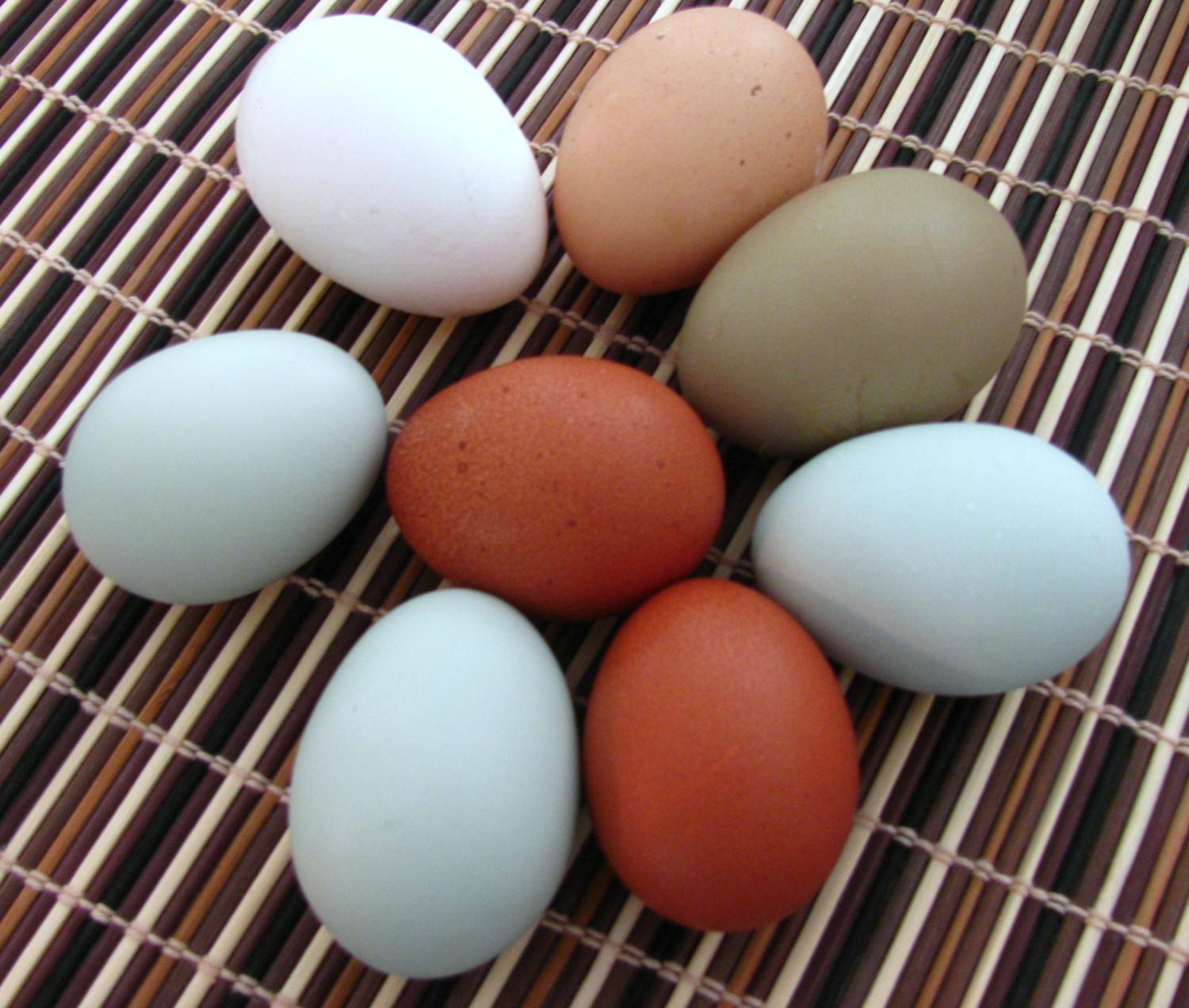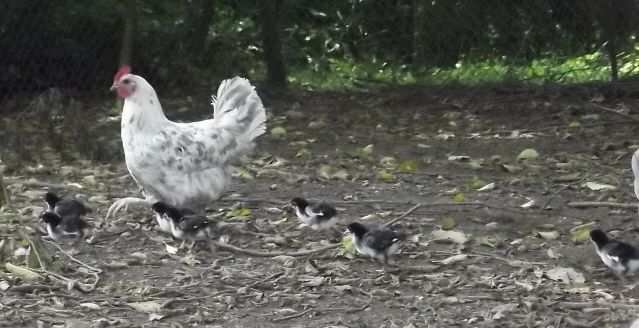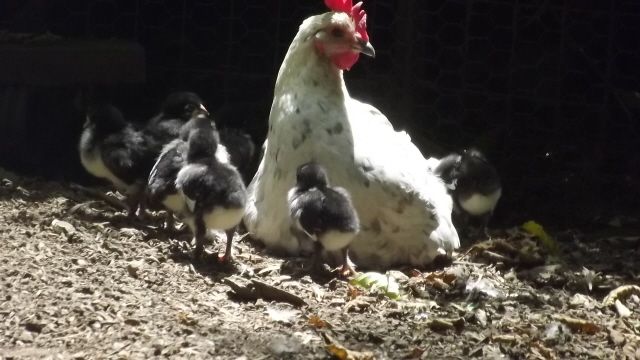It was about 50% when I left and left the dehumidifier on too.... oddly the dehumidifier was keeping the temp about right without the heat coming on in the incubator. I will candle them in a few days and see what is going on. With the turner not running for several days they may all be lostThank you Donna. I guess they do not have any fear anymore. Just got off the phone with my hubby and he told me that he saw them this morning on his way out. Said he wished he had called and told me, so I would watch for them. How sweet.
Sorry to read of your humidity issues. What's the latest word?
Got some photos of the Birchen chicks out and about today. Trying to upload them.








